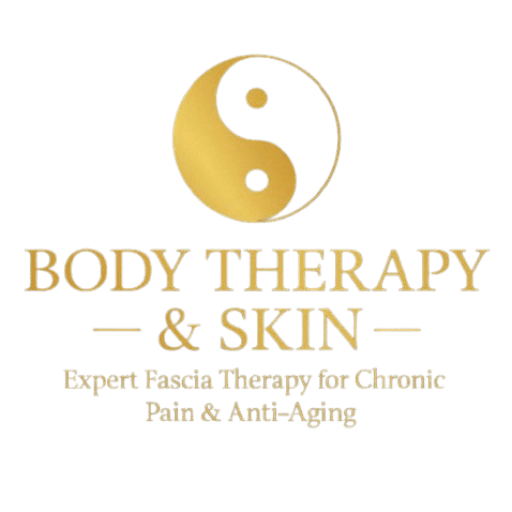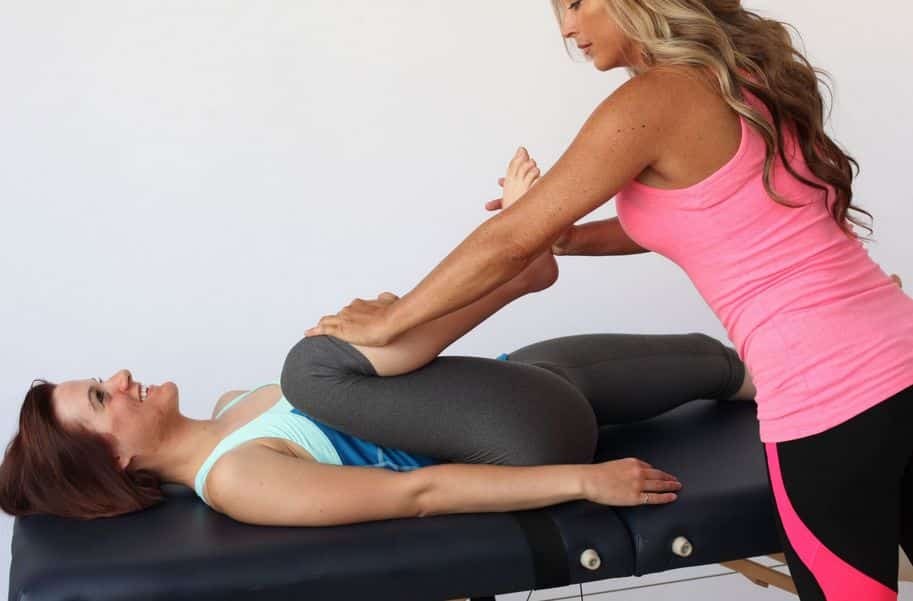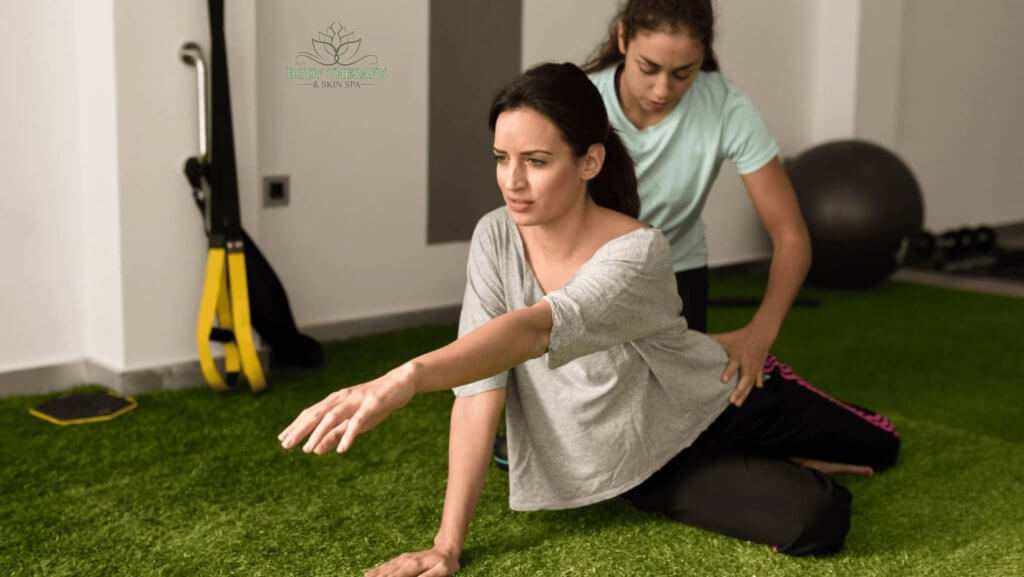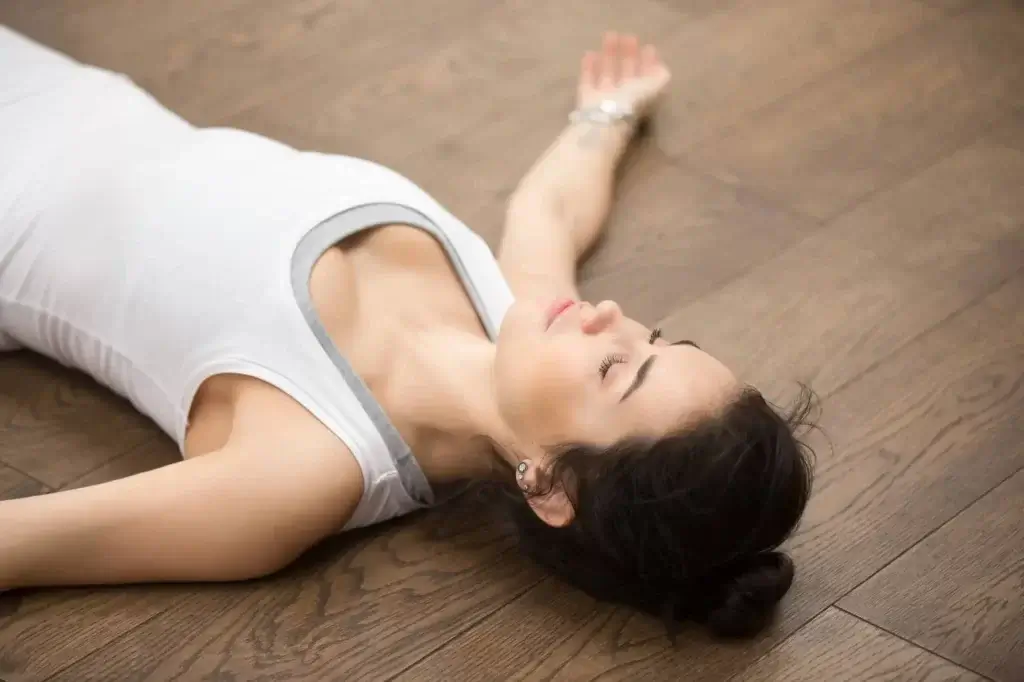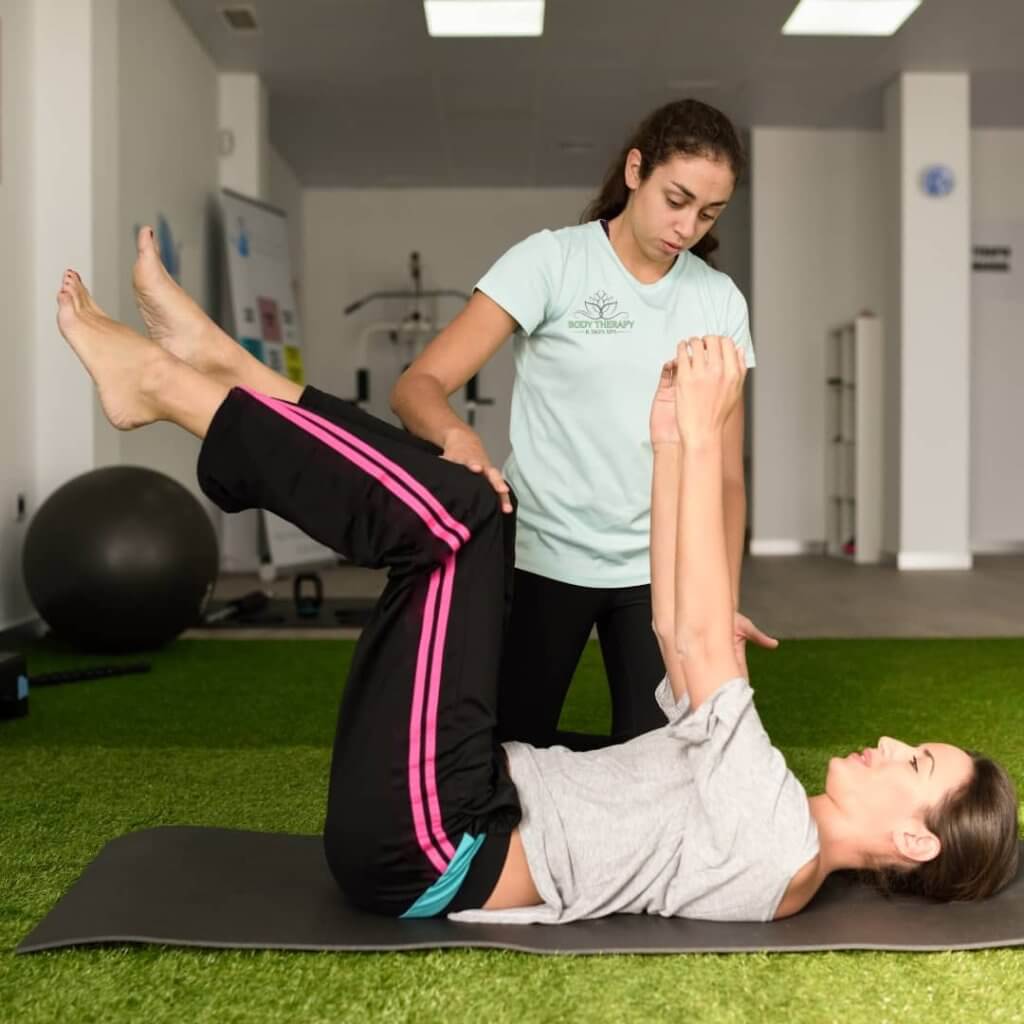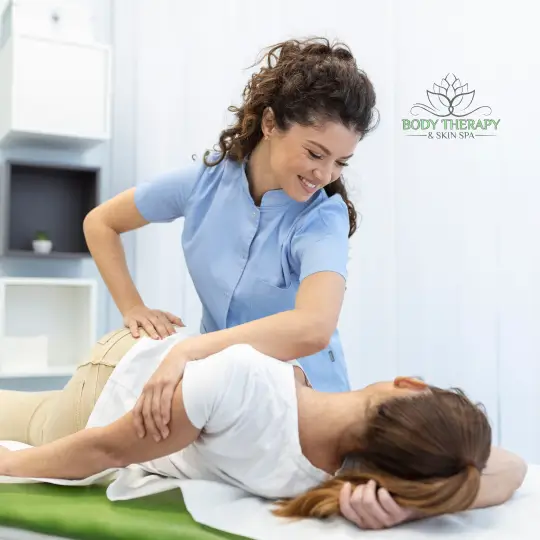Assisted Stretching Exercises at Body Therapy and Skin
If you’re dealing with tight muscles, limited flexibility, or chronic pain, Assisted Stretching Exercises at Body Therapy and Skin could be your solution. Our professional therapists guide you through stretches that help release deep muscle tension, increase your range of motion, and bring lasting relief from discomfort. Unlike traditional self-stretching, assisted stretching allows you to reach deeper into your muscles, offering long-term benefits that improve your physical health and well-being. Struggling with Chronic Pain? Assisted Stretching Exercises Can Help. Chronic pain and stiffness can make daily life difficult, whether from long hours at work, injury, or even stress. At Body Therapy and Skin, we target the fascia – the connective tissue around your muscles – often the source of deep-seated pain. Through Assisted Stretching Exercises, our therapists help you stretch more effectively, providing relief from neck pain, back pain, and muscle tension. These stretches go beyond what you can achieve on your own, offering immediate and long-lasting results. Experience the Benefits of Assisted Stretching Exercises At Body Therapy and Skin, we’re committed to helping you move better and feel better through personalized Assisted Stretching Exercises. The benefits go far beyond temporary relief: our stretches improve flexibility, increase circulation, reduce stress, and enhance muscle recovery. Whether you’re an athlete looking to boost performance or simply seeking relief from daily muscle tension, Assisted Stretching offers unparalleled benefits. Regular Assisted Stretching not only improves your physical performance but also helps prevent injuries and improve your overall posture. By stretching your muscles in a controlled, guided manner, you experience a greater range of motion and longer-lasting comfort. How to Do Assisted Stretching for Maximum Results During a session of Assisted Stretching Exercises at Body Therapy and Skin, our therapists guide your body through targeted stretches designed for maximum effectiveness. Unlike traditional stretching methods, where you might not reach deep enough into your muscles, Assisted Stretching allows us to work with your body’s natural movement and safely push your muscles further. Curious about how to do Assisted Stretching? It’s simple – our therapists take the lead, ensuring that your muscles are stretched without risk of injury. This hands-on approach helps your muscles release tension and enhances your body’s overall flexibility. Why Choose Assisted Stretching Exercises at Body Therapy and Skin? When it comes to flexibility and pain relief, Assisted Stretching Exercises at Body Therapy and Skin offer unique advantages. Our professional therapists work closely with each client to create a personalized stretching plan that addresses their specific needs, whether it’s recovering from an injury, improving flexibility, or relieving chronic pain. This hands-on approach ensures that you get the full benefits of Assisted Stretching without the risks associated with self-stretching. Our tailored sessions not only provide relief from pain but also improve muscle recovery, reduce the risk of future injuries, and promote long-term muscle health. Say Goodbye to Stiffness and Pain Stiffness, pain, and limited mobility don’t have to be part of your life. With Assisted Stretching Exercises at Body Therapy and Skin, you can enjoy immediate relief and long-lasting results. Our experienced therapists target the areas that cause the most tension, offering stretches that help you regain flexibility, improve your posture, and reduce pain. Imagine waking up feeling more mobile, flexible, and free of pain. That’s what Assisted Stretching Exercises can do for you. Whether you’re recovering from a workout or seeking relief from chronic pain, our sessions are designed to help you feel your best. Why Assisted Stretching Works Better Than Self-Stretching Self-stretching can only take you so far. Often, it’s difficult to reach the deep muscles that are responsible for tension and pain. That’s where Assisted Stretching Exercises come in. At Body Therapy and Skin, our therapists use specialized techniques to help you achieve stretches that go beyond your normal range of motion, providing more effective results. With Assisted Stretching, you get the benefit of a professional guiding you through the process, ensuring that each stretch is safe, targeted, and effective. This not only helps you recover from pain but also improves your overall physical performance and flexibility. Increase Your Flexibility with Assisted Stretching Exercises Whether you’re an athlete or simply looking to move more freely in your daily life, Assisted Stretching Exercises can help you achieve a greater range of motion. Our guided stretches work on the deep muscles and connective tissue that are often difficult to reach on your own. By increasing flexibility, Assisted Stretching reduces the likelihood of injuries and enhances your body’s ability to move fluidly. At Body Therapy and Skin, we offer a customized approach to stretching that’s tailored to your unique needs. Our therapists help you target the areas that need the most attention, ensuring that you leave each session feeling more flexible and relaxed. Perfect for Post-Workout Recovery After an intense workout, your muscles can feel tight and sore. Assisted Stretching Exercises are the perfect solution for post-workout recovery. Our therapists at Body Therapy and Skin help stretch your muscles safely and effectively, reducing soreness and preventing injury. Regular Assisted Stretching sessions can also enhance your performance by increasing flexibility and promoting faster recovery. Whether you’re an athlete or someone who exercises regularly, incorporating Assisted Stretching into your routine can make a significant difference in how you feel and perform. Long-Term Benefits of Assisted Stretching The benefits of Assisted Stretching Exercises go beyond just immediate relief. With regular sessions at Body Therapy and Skin, you’ll notice long-term improvements in your flexibility, posture, and overall well-being. Consistent Assisted Stretching not only reduces muscle tension but also prevents the recurrence of pain and stiffness. Over time, you’ll experience greater ease of movement, better muscle strength, and improved circulation. This can have a lasting positive impact on your physical health and quality of life. Personalized Stretching Plans Tailored to You At Body Therapy and Skin, every session of Assisted Stretching is tailored to meet your individual needs. Whether you’re dealing with tight hamstrings, recovering from an injury, or simply looking to improve your flexibility, our therapists customize each
Assisted Stretching Exercises at Body Therapy and Skin Read More »
